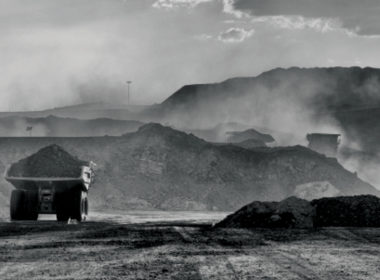Martijn Wilder AM, head of Baker & Mackenzie’s Global Environmental Markets practice, experienced first-hand how things played out at the historic Paris Climate Change Summit. Here, he explains why the agreement is so significant in the development of climate change law.
On 12 December 2015, 196 parties (195 countries and the European Union) agreed to the terms of the Paris Agreement, a historic document aimed at limiting global warming to “well below 2°C”. The Paris Agreement was negotiated under the 1992 United Nations Framework Convention on Climate Change (UNFCCC), and is expected to come into force from 2020, replacing the Kyoto Protocol.
The Paris Agreement is all encompassing, with legal obligations on all counties to report and account for their mitigation actions. While implementation of the agreement will take some time, the Paris Conference of the Parties (COP 21) showcased the range of other climate change initiatives occurring at a sub-national government level, and non-government action, some of which have substantial implications for companies and other organisations within those jurisdictions.
While there have been 20 UNFCCC Conferences of the Parties (COPs), this was always going to be different – and not a repeat of the Copenhagen conference at which the parties failed to agree to a new treaty. The French Government worked tirelessly throughout 2015 to prepare for COP 21. French diplomats and politicians led efforts around the world with governments, business, non-government organisations and media to prepare the groundwork for a successful outcome. This included engaging many stakeholders who traditionally had not been involved in climate change issues through the Lima-Paris Action Agenda. Other governments also helped to build momentum before the COP through major bilateral announcements such as the US-China Joint Presidential Statement on Climate Change and the UK-China Joint Climate Change Statement. This preparatory work was bolstered by the arrival of more than 100 heads of state at the beginning of the COP to kick-start the discussions. The mood in the hallways of the conference centre at Le Bourget was energised, focused and upbeat at the start. The substantial involvement by civil society, non-governmental entities, state, provincial and city governments and private sector representatives was unprecedented. This breadth of involvement, reflected in multiple provisions of the agreement, meant the two weeks of the COP were replete with significant governmental and business announcements coinciding with, but outside of, the formal negotiation process.
With respect to the negotiation of the Paris Agreement itself, the French Government masterfully steered the process. Interestingly, the negotiations used the high-level “indaba” negotiating approach, whereby parties stated their boundaries up front to minimise disagreements over the final agreement and avoid last-minute surprises.
Given the historical divide between developed and developing countries, this approach – led by French Foreign Minister Laurent Fabius – helped achieve compromise over several issues in the final days of negotiation. Ultimately, the Paris Agreement provides the framework for future global action on climate change in terms of both mitigation and adaptation, and sets out a strong pathway for future low carbon economic growth, finance and investment. In much the same way as the UNFCCC and the Kyoto Protocol laid the foundations for government reform, private sector investment and market activity on climate change, the Paris Agreement will do the same – but at a more transformative level.

Real ambition
One of the more surprising outcomes of the Paris Agreement is its level of ambition. The agreement sets an unambiguous goal to hold global warming to “well below 2°C” and to pursue efforts to limit the temperature increase to 1.5°C above pre-industrial levels. While we were aware of calls by several low-lying states to include a 1.5°C target, we did not expect such a figure to be included in the text. Its inclusion speaks to the increased importance state parties are now placing on mitigation.
To achieve this ambitious target, countries are to “peak” (i.e. reach maximum emissions output) and then reduce emissions “as soon as possible” to “achieve a balance between anthropogenic emissions by sources and removals by sinks”, which absorb greenhouse gases, in the second half of the century. Put differently, from as soon as possible after 2050, countries are to have net-zero emissions, using carbon sinks, such as forests, to offset any emissions they produce.
The focus of the agreement is on a process for achieving the well below 2°C target. Key to that process is the bottom-up submission by parties of nationally determined contributions (NDCs). NDCs are high-level policy plans setting out what approach each country will take to reduce emissions and contribute to the global goal.
In the lead-up to COP 21, parties were called upon to submit their intended nationally determined contributions (INDCs) – interim NDCs intended to help create momentum for the agreement.
This bottom-up approach to mitigation through NDCs differs from the Kyoto Protocol’s top-down approach. Where Kyoto required an annexed list of developed countries to achieve emission reduction targets and was prescriptive at the international level in the approach that those countries could take to achieve that target, the Paris Agreement asks all countries to justify how they propose to contribute to the broader global emission reduction goal. With all countries defining their own measures through INDCs/NDCs, the Paris Agreement has created greater buy-in into the process. (While much of the commentary credits the Paris COP for this concept, it was actually developed following the Copenhagen COP.)
The NDCs will also be made publically available, enabling civil society to review, analyse and hold governments to account for those pledges. In addition, there will be a process of global stocktaking on progress towards the well-below 2°C goal every five years from 2023, a process designed to drive countries to increase the ambition of their NDCs. To set an ambitious tone to the start of the agreement, the Paris decision calls on parties to participate in a “facilitative dialogue” in 2018, before the agreement comes into force, in which all NDCs will be assessed.
International markets, REDD+ and carbon finance
Of further particular note is the resurgence of the role of international markets in the Paris Agreement. Though a critical part of the Kyoto Protocol, markets have had a rocky path over the past 10 years and were not a guaranteed part of the Paris Agreement and, at times during negotiations, there were calls to keep markets out altogether.
The NDC structure gives countries autonomy to develop their own domestic approaches to mitigation, and would thus allow them to use domestic emissions trading or other market mechanisms to achieve their goals. However, a key issue for debate in developing the Paris Agreement was the role markets would play in allowing countries to collaborate internationally, and the role for project-based emission reductions.
Some hoped the best case scenario at the Paris COP would be the absence of a prohibition on the use of markets coupled with an understanding that markets could be used at the discretion of the parties. Instead, there was convergence among the parties that markets were critical to providing flexibility to parties and to allowing for more ambitious NDCs.
One of the more surprising outcomes of the Paris Agreement is its level of ambition. The Paris Agreement sets an unambiguous goal to hold global warming to “well below 2°C” and to pursue efforts to limit the temperature increase to 1.5°C above preindustrial levels.
While progress was made during the Paris COP to incorporate markets into the negotiating text, just before the final draft was released the provisions on markets were still bracketed, meaning they were not agreed by the negotiating parties. Although it appeared the vast majority of states realised the benefits of allowing the use of markets, there was a real concern in the hallways, because a small minority of parties that consistently has opposed markets was creating obstacles.
While not using the language of markets per se, the Paris Agreement explicitly authorises markets. Under article 6(2), the Paris Agreement allows countries to voluntarily cooperate in meeting their NDCs through the use of internationally transferred mitigation outcomes (ITMOs).
The agreement allows for these emission reductions derived from a number of different sources from one country to be used by another country to fulfil its NDC commitments, provided the host country does not also count the emission reductions towards its NDC commitments. This has parallels to the transfer of Allowable Amounts under the Kyoto Protocol. The CMA will provide further guidance on what sources can contribute towards ITMOs and the approach to avoid double counting of mitigation outcomes.
Separately, the agreement creates a mechanism to “support emission reductions and sustainable development” through which private and public entities can support mitigation via projects and programs that reduce emissions. Many commentators have referred to this as a new “Sustainable Development Mechanism” or the “ITMO Mechanism”, but at this stage have intentionally not adopted such a description given the agreement lacks sufficient detail of how such a mechanism will operate.
Furthermore, the Paris Agreement includes an explicit provision on reducing emissions from deforestation and forest degradation (REDD+), which reinforces the fact that 54 per cent of countries prioritised the land use sector within their INDCs and several ministers from developing countries specifically called out forests in their public announcements during the first week of the COP.
As with prior COPs, climate finance was a contentious issue in Paris. Poorer countries sought strong assurances from the developed world that pledges for finance would be scaled up. Developed countries also argued that wealthier developing countries should make contributions to finance. These various negotiating positions are reflected in the agreement. The final Paris Agreement calls for developed countries to provide developing countries finance, which “should represent a progression beyond previous efforts”. Other parties, which likely refers to wealthier developing countries, are called upon to provide financial support on a voluntary basis.
In practice, this means the previously agreed US$100 billion per annum financial commitment that UNFCCC Parties made in Durban continues until 2025. The Paris decision sets a floor of US$100 billion per year to be mobilised each year after 2025. However, the Paris Agreement itself does not include any new or specific figures. This reflects one of the major issues of contention during the negotiations, particularly in respect of the amount and source of funding. As with previous COP decisions, the Paris decision encourages the greater coordination of support from, inter alia, public and private, bilateral and multilateral sources, such as the Green Climate Fund.
Legal responsibility for loss and damage
A critical issue for developing countries in COP negotiations has been the responsibility of developed countries for loss and damage from climate change suffered by developing countries. This remained a significant issue in Paris.
Wealthier countries resisted the inclusion of loss and damage without clear boundaries on the issue, for fear of creating legal liability. Vulnerable countries, particularly small island states, pushed for a process to deal with climate change consequences.
The compromise position reached was for a reference to be made to loss and damage in article 8, but with a clear statement that the inclusion of loss and damage would not create any legal liability or rights to compensation. Specifically, the agreement says that discussion on loss and damage will be facilitated by the Warsaw International Mechanism for Loss and Damage, originally established by the 2013 COP.
The CMA will preside over this mechanism, and should cooperate with respect to early warning systems, emergency preparedness, slow onset events, events that involve irreversible loss, risk assessment and insurance, non-economic losses and climate resilience.
In addition to loss and damage, the agreement also covers adaptation. Under the agreement, all parties have agreed to enhance “adaptive capacity” and many countries have already set out adaptation priorities in their INDCs. Countries are called upon to carry out national adaptation planning processes, which include assessing climate change vulnerabilities and impacts to inform prioritisation of actions, implementing actions to adapt and build resilience and monitoring, evaluating, and learning from adaptation plans, policies, programs, and actions. Adaptation efforts are also to be included in the five-yearly global stocktaking process. Each country is required to submit and periodically update an adaptation communication.
Entry into force
The Paris Agreement is open for signature between 22 April 2016 and 21 April 2017 and will enter into force 30 days after at least 55 parties representing at least 55 per cent of global greenhouse gas emissions have deposited instruments of ratification.
The earliest the Paris Agreement could enter into force is the end of May 2016, although this seems unlikely (noting it took eight years for the Kyoto Protocol to enter into force). Even then it should be noted that the emissions reduction obligation only commences in 2020, although we would expect all countries to be on the path to reducing emissions before this date. Furthermore, many countries have existing commitments.
To ratify the agreement, each country will have to follow its own process for ratifying international agreements. The US ratification process had significant bearing on the structure and content of the Paris Agreement. In fact, on the morning of the historic day when Minister Fabius gavelled COP 21 to a successful close, a typographical error in article 4 including the word “shall” rather than “should” threatened to derail the whole outcome. The concern over the word “shall” is largely based on the US ratification process and the whole world understands that no treaty requiring US Senate ratification would be feasible if the US were to be a party.
Legal status
Once effective, the Paris Agreement will be considered a treaty under the Vienna Convention on the Law of Treaties. This means the countries that sign the agreement will be bound to its terms.
There is some confusion on this point, with commentators suggesting the agreement is not legally binding. The reason for this confusion is that the NDCs, the substantive plans on how countries will achieve the well-below 2˚C target, are not part of the agreement themselves.
The only aspects of the agreement that compel a state party to action (i.e. those articles denoted by the word “shall” rather than “should”) are those that relate to obligations to share their NDCs at five-year intervals for inclusion in a public registry. Additionally, developed countries are bound to provide climate finance to support developing countries and report on that finance every two years. Aside from these procedural points, there are no hard obligations on the parties.
Therefore, if a country, for instance, fails in its pledge to reduce emissions by its stated target, there will be no consequences under the Paris Agreement, provided it has shared its NDC, at five-year intervals, and complied with the other procedural matters.
This does not mean the agreement is not formally legally binding on states, but simply means there are questions about the value of the binding nature of that agreement.
Article 15 of the Paris Agreement does establish a mechanism to facilitate implementation of and promote compliance with the provisions of the agreement, which “shall be expert-based and facilitative in nature and function in a manner that is transparent, non-adversarial and non-punitive”.
This is in contrast to the powers conferred on the implementation branch of the Kyoto Protocol, which had broader investigative powers to address non-compliances with Kyoto targets. A number of parties had concerns about the punitive nature of the Kyoto compliance mechanism (which has limited participation in the Second Commitment Period), hence the need to find a more collaborative alternative.
Some commentators have argued that the value of the agreement lies in its ability to empower civil society actors to hold countries to account for their NDCs. For instance, some commentators have suggested that the agreement could bolster claims made by activists advancing climate change-related public interest litigation. Particularly, the Paris Agreement provides further evidence that a particular government has agreed to take action on climate change and failed to do so.
International commitments before entry into force
Notwithstanding the time lag before the Paris Agreement takes effect, parties continue to have obligations to address climate change in the period before 2020. Parties to the Kyoto Protocol adopted amendments to that instrument in 2012 (the Doha Amendments), which will bind those developed country parties that ratify the amendment to emission reduction or limitation pledges for the Second Commitment Period (2012-2020). Those pledges include Australia’s 5-15 per cent or 25 per cent reduction of GHG emissions from 2000 levels, the EU’s 20-30 per cent reduction from 1990 levels, and Norway’s 40 per cent reduction from 1990 levels. Although the Doha Amendment has not yet entered into force, it is expected to do so in time and countries are continuing to utilise the flexible mechanisms developed under the Kyoto Protocol. For example, although beset by low prices due to reduced demand, the CDM remains operational and many countries and funds are purchasing post-2012 certified emission reduction units (CERs).
In addition, a large number of developed and developing countries have made mitigation pledges that were first noted in the Copenhagen Accord and subsequently included in the decisions from COP 10. Those pledges set out the voluntary actions countries intend to take during the period 2012-2020 and include reductions in the emissions intensity of economies, reducing emissions growth against business-as-usual scenarios, reductions in deforestation rates, as well as absolute targets.
Although non-binding, processes are in place to review (and potentially scale up) the ambition of these pledges and, as the actions are bottom-up and reflect agreed domestic goals, they are expected to be adhered to.
In order to meet their mitigation pledges, a number of countries are exploring the use of market-based mechanisms such as emissions trading schemes, with new schemes commencing in recent years in South Korea and China, and many more under development. These schemes may well underpin the ITMOs contemplated by the Paris Agreement.
Before the Paris Agreement coming into force, the decision encourages parties to ratify the Second Commitment Period of the Kyoto Protocol, continue to meet their mitigation pledges under the Copenhagen Accord, and otherwise comply with ongoing international policy. The decision also calls on non-state parties to continue taking action during this interim period. In practice, those countries that are proactive and take a leading position on producing NDCs and converting them into policy and legal frameworks will have an advantage, potentially getting greater access to climate finance.
Final reflections
The Paris COP was an important event in progressing towards a solution to global climate change and highly significant for the development of international climate change law. The negotiated outcomes have set up the policy infrastructure through which states can work towards meeting the well below 2°C goal. The innovative structure of the agreement, the pledges of climate finance and the plethora of civil society-led financial and technical initiatives announced create the right conditions for a global reduction in emissions. This is the consensus view of leading governments and private sector stakeholders, with Goldman Sachs commenting that the Paris Agreement was the “most important climate agreement since the Kyoto Protocol” and US President Barack Obama calling it a “turning point for the world”.




